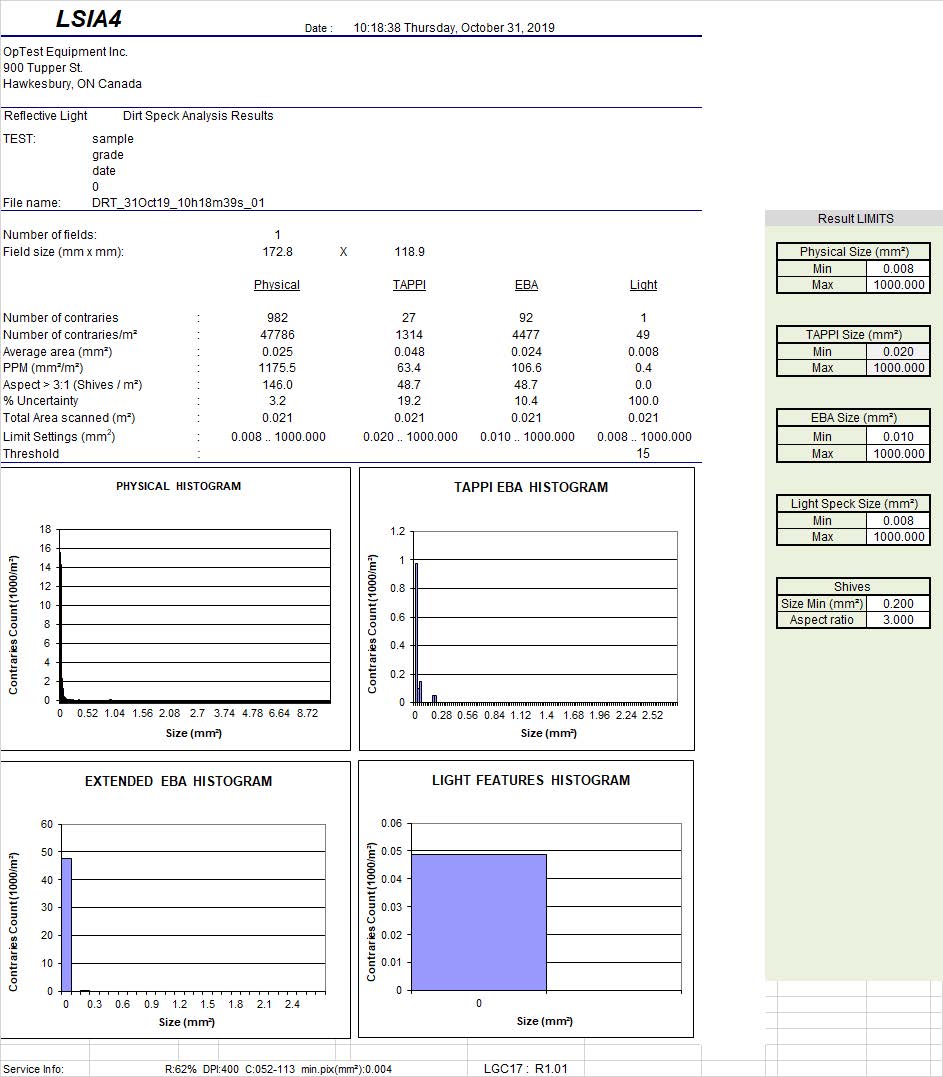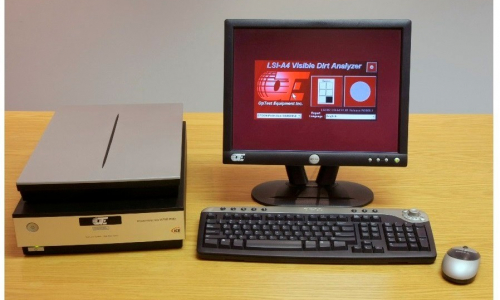The Large Sheet In-speck-tor - A4 (LSI-A4) measures dirt specks in pulp and paper according to ISO/CEN 5350-4, TAPPI T563 & PAPTAC D35 standard methods. Operating on flat and smooth sheets, with ISO Brightness >40%, it measures dirt specks on sheets in a single scan. The LSI provides the information you need to assure a high-quality product.
Translation provided by Google
Large Sheet In-speck-tor-A4 Dirt (LSI-A4-DIRT) - OpTest
Large Sheet In-speck-tor-A4 Dirt (LSI-A4-DIRT)
| Product Name | Large Sheet In-speck-tor-A4 Dirt (LSI-A4-DIRT) |
| Product Code | LGC17-DIRT |
| Standards/Methods | TAPPI T 563, ISO 5350-4, PAPTAC D35 |
| Test Material | Paper, Tissue, Board, Pulp sheets |
| Manufacturer | OpTest Equipment Inc. |
| Availability from OpTest | Worldwide |
The Large Sheet In-speck-tor - A4 (LSI-A4) measures dirt specks in pulp and paper according to ISO/CEN 5350-4, TAPPI T563 & Paptac D35 standard methods.
The LSI measures the number, size and equivalent black area (EBA) of visible dirt specks far more precisely than the human eye. Operating on flat and smooth sheets, with ISO Brightness >30%, it measures dirt specks on sheets in a single scan. The LSI provides the information you need to assure a high quality product.
A Certified Sheet Scanner
• High precision industrial scanner with serviceable parts, neutral white backing, and precise mechanics compared to consumer-type scanners
• Certified and calibrated at OpTest, it scans an A4, or letter size, sheet in 30 s, or less at an optical resolution 16 µm/pixel (1600 dots per inch)
ADVANTAGES
• No need to precisely place the sample
• Rapid pre-scan with "click and drag" sheet image boundary location for both round and rectangular sheets
• Retrievable "sheet image boundary" templates
• Allows viewing of the full-resolution image exactly as recorded by the scanner
• Pans and zooms around the image to view individual specks
• ISO Level 2 traceable EBA calibration standards
OpTest provides a set of traceable calibration standards that meet the requirements of the standard methods.
The LSI-A4 software runs in the Windows™ computer environment. It processes images acquired by the certified scanner. It coexists with other applications.
RESULTS AND REPORTS
The LSI-A4 provides the most important dirt results in the Operation Viewer. These include:
• Physical and EBA/Tappi speck count / m2 and PPM (mm2 / m2) with %-counting Uncertainty
• Shive counts
• Size distribution histograms with adjustable upper and lower limits
• Images of the sheet & individual specks
All data can be viewed and manipulated by Microsoft Excel™. An Excel template and auto-load macro is provided with the LSI-A4 software.


SYSTEM REQUIREMENTS
• Computer with two available USB 2.0 ports, and a minimum 16GB of RAM
• Latest Versions Windows™
• Microsoft Office™ (2016 or higher).




